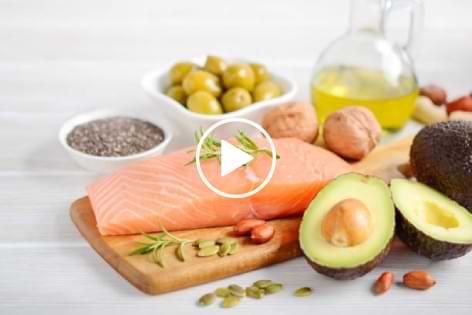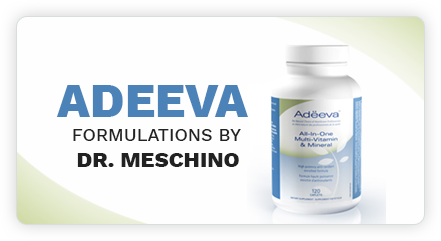
LMU 62 – Cracking the Code: How Fats Impact Cholesterol Levels
Source: The Journal of Nutrition. 2005
Lifestyle Medicine Update (August 12, 2017)
Introduction:
The enigma of how different types of dietary fats influence cholesterol levels has lingered in the scientific and health communities for years. What exactly is the connection between saturated fats, trans fats, and polyunsaturated fats, and how do they shape our cholesterol profiles? The key to this puzzle lies in a remarkable review published in 2005 in *The Journal of Nutrition*. This comprehensive analysis offers a long-awaited explanation for the intricate relationship between dietary fats and cholesterol levels, ushering in a new understanding that has the potential to revolutionize heart health strategies.
The Road of Absorption: A Journey through the Gut
When we consume foods containing various fats, whether saturated, trans, or polyunsaturated (including omega-3 fats), they embark on a complex journey through our bodies. These fats are transported from the gut through minuscule carriers called chylomicrons, which enter the lymphatic system before eventually entering the bloodstream. While some fats are stored in fat cells and muscle tissue, others find their way to liver cells, setting the stage for the cholesterol-challenging events that follow.
The Liver’s Role: Orchestrating Cholesterol Production
The presence of saturated fats, trans fats, and polyunsaturated fats within the liver triggers a significant response – the activation of cholesterol production. Cholesterol is a crucial component that facilitates the transportation of these fats back into the bloodstream, now encapsulated within very low-density lipoproteins (VLDL). Liver cells release these VLDLs into the bloodstream, and their fate is determined by the interplay between fat cells, muscle cells, and liver cells.
Fat Cells and Muscles: Balancing Act of Storage and Utilization
Fat cells play a pivotal role in storing fat, while muscles use fat as a primary fuel source during periods of rest, light activity, exercise, and fasting. As VLDLs shed their fat content, they transform into low-density lipoproteins (LDL), often referred to as “bad cholesterol.” The LDL cholesterol contains predominantly synthesized cholesterol, originating from the liver.
LDL-Receptors: The Heart of Cholesterol Clearance
Here’s the turning point that reshapes our understanding of cholesterol’s impact on health. The consumption of polyunsaturated fats, encompassing omega-3 fats and monounsaturated fats, triggers an increase in LDL-receptors on liver cells. This critical shift empowers the liver to remove excess LDL cholesterol from the bloodstream, thwarting the rise of harmful cholesterol levels. The influence of these polyunsaturated fats extends beyond receptor quantity; they enhance the fluidity of cell membranes housing LDL-receptors, further optimizing cholesterol clearance.
Polyunsaturated Fats: A Multifaceted Ally in Liver Health
Polyunsaturated fats wield further influence within the liver, inhibiting the conversion of carbohydrates into cholesterol-raising saturated fat. This process, which typically produces palmitic acid, a cholesterol-elevating saturated fat, is slowed down by polyunsaturated fats. Consequently, the liver produces less cholesterol. Additionally, polyunsaturated fats stimulate the conversion of cholesterol into bile acids, crucial in digesting fats following a meal. As these bile acids cannot revert to cholesterol, polyunsaturated fats contribute to a reduced total cholesterol pool within the liver.
Identifying the Culprits: Saturated and Trans Fats
Saturated fats responsible for the most significant rise in blood cholesterol include lauric, myristic, and palmitic acid. These fats are prevalent in beef, pork, and high-fat dairy products. While coconut and palm oil contain substantial lauric acid and other cholesterol-raising saturated fats, the role of trans fats is even more alarming. Trans fats not only elevate bad cholesterol levels but also lower good cholesterol (HDL), contributing to a double jeopardy scenario.
Empowering Your Diet for Heart Health
As we unravel the intricate dance between dietary fats and cholesterol regulation, a clear path to heart health emerges. To lower LDL cholesterol and raise HDL cholesterol, consider embracing the following dietary and lifestyle strategies:
- Make Mindful Choices: Reduce or eliminate intake of beef, pork, high-fat dairy products, coconut oil, and palm oil.
- Trans Fat Awareness: Steer clear of trans fats found in pastries, creamy salad dressings, shortenings, and certain processed foods.
- Embrace Healthy Fats: Incorporate fish (twice weekly), olive oil, nuts, avocados, and monounsaturated fats into your diet.
- Swap Smartly: Opt for lean protein sources like chicken breast, turkey breast, and soy products.
- Plant Power: Beans, peas, ground flaxseed, psyllium husk fiber, oat bran, apples, and artichokes are your allies in cholesterol management.
- Sugar and Starch Moderation: Reduce refined sugars and starchy foods, as they can trigger cholesterol-raising saturated fat production in the liver.
- Exercise and Weight Management: Engage in endurance exercise and maintain a healthy weight to boost HDL cholesterol.
Achieving Optimal Cholesterol Levels
As this revelation reshapes our approach to heart health, the goal of achieving ideal cholesterol levels becomes clearer than ever:
- Total Cholesterol: Aim for levels below 3.9 mmol/L (150 mg/dl).
- LDL Cholesterol: Target levels below 2.0 mmol/L (76 mg/dl).
Conclusion: Unleashing the Power of Dietary Fats
The intricate web connecting dietary fats and cholesterol levels is gradually unravelling, revealing a wealth of insights that can transform heart health strategies. With the guidance offered by the research from *The Journal of Nutrition*, individuals now possess the tools to wield their dietary choices as a means of fine-tuning their cholesterol profiles. As the landscape of heart health evolves, it’s time to embrace the power of knowledge and take charge of our well-being.
Reference
Fernandez ML and West KL. Mechanisms by which dietary fatty acids modulate plasma lipids. The Journal of Nutrition. 2005. 135:2075-2078.
http://jn.nutrition.org/content/135/9/2075.full

Dr. James Meschino
ABOUT THE AUTHOR
Dr. James Meschino, DC, MS, ROHP, is an educator, author, and researcher having lectured to thousands of healthcare professionals across North America. He holds a Master’s Degree in Science with specialties in human nutrition and biology and is recognized as an expert in the field of nutrition, anti-aging, fitness, and wellness as well as the author of numerous books.


